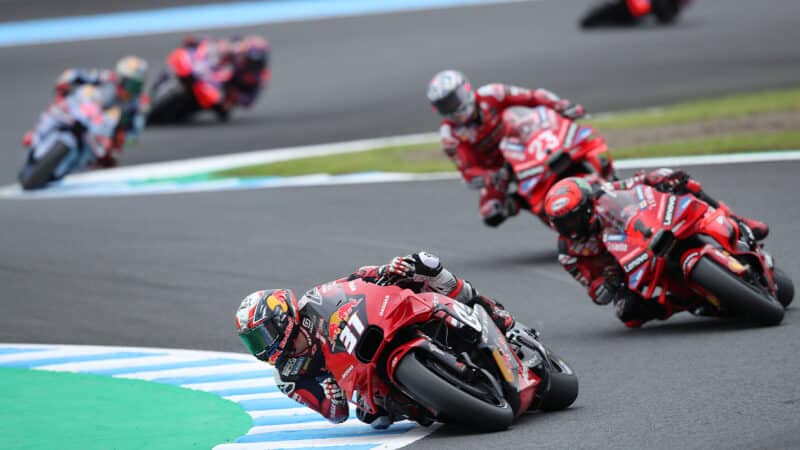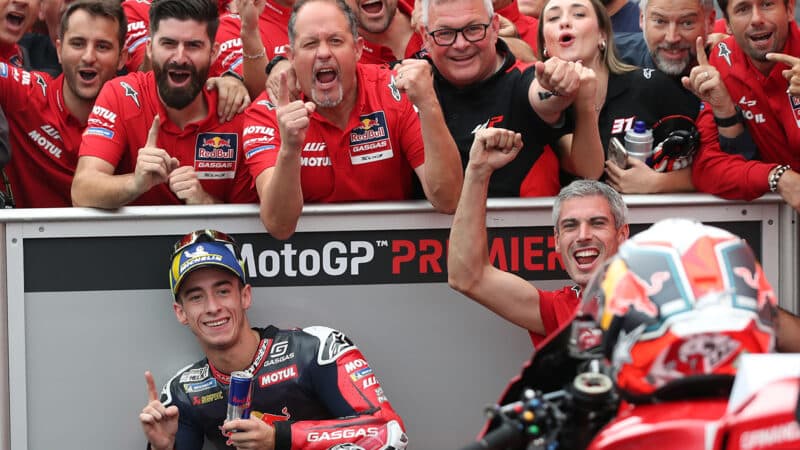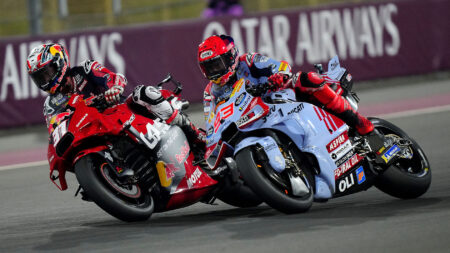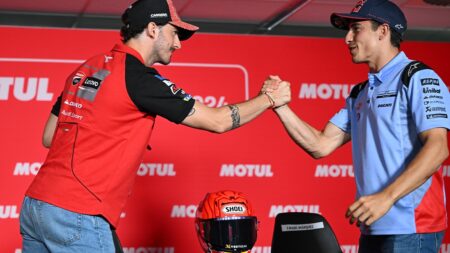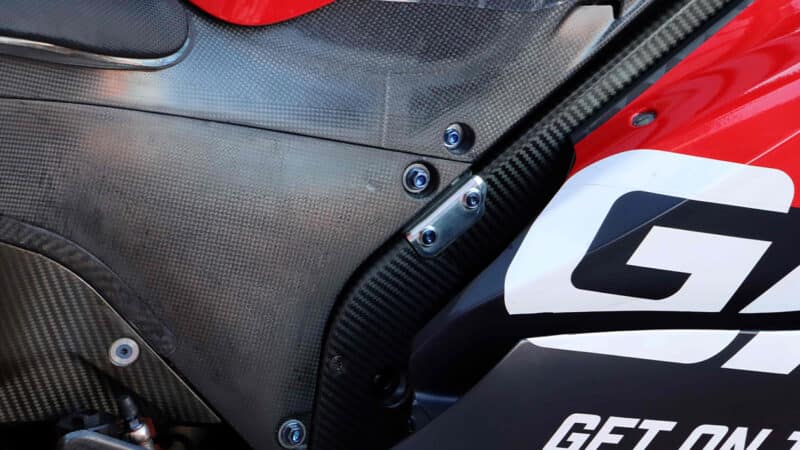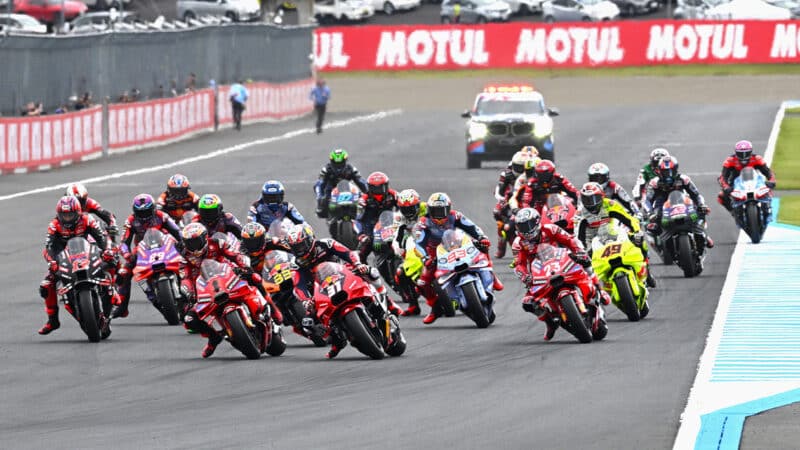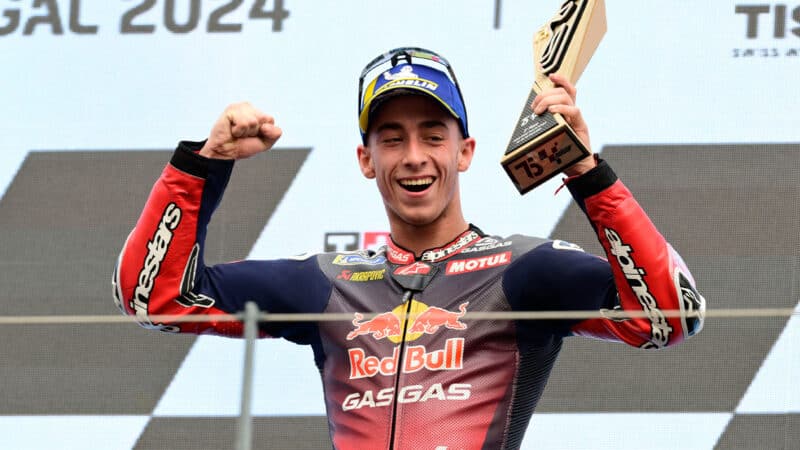Acosta rises above all this to ride his KTM RC16 like he’s been doing it all his life. The way he moves about the machine to avoid all these issues is a wonder to see.
How does he do this? Because he’s a natural. All the greatest motorcycle racers have a natural feel for their motorcycles – a call-and-response between man and machine. Your motorcycle is telling you to do something – can you hear it?
MotoGP and Formula 1 world champion John Surtees said that motor racing is about “having a conversation between you and the machine”. If you have that natural feel for a machine you listen to it and it tells you what it needs, then you adjust yourself to those needs.
That’s what Acosta does every time he moves his body this way or that to load the tyres in a different way, or use a different part of the tyres, or minutely adjust throttle opening or brake pressure to help his motorcycle into corners, through corners and out of corners.
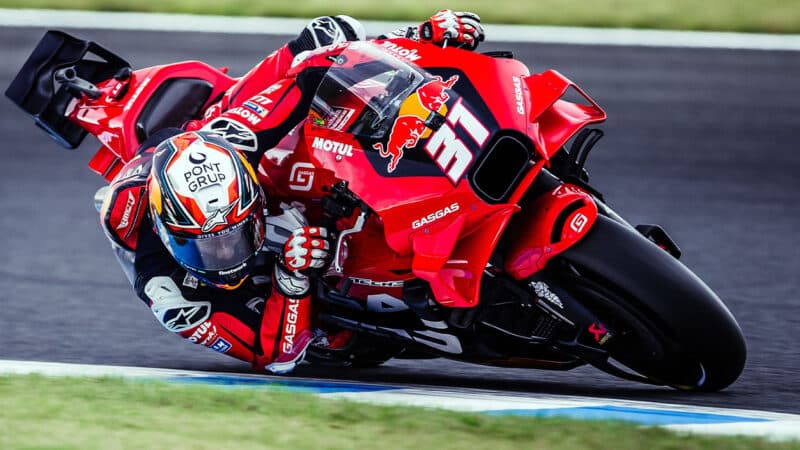
Acosta – eyes very much on the future – lets his motorcycle tell him what it needs to go faster and reacts accordingly. It’s a conversation
Red Bull
The current rear chatter issue is a case in point. Many riders are really struggling with chatter, especially fellow KTM riders Binder, Jack Miller and Augusto Fernández. Acosta mostly avoids the problem because he loads and uses the bike in certain ways. He’s having that conversation.
But what about all the crashes? Acosta currently tops MotoGP’s crash league, with 22 tumbles at the first 16 GPs. So surely that means he’s only fast because he’s riding over the limit?
Here’s a couple more old racing sayings – ancient racetrack lore passed from generation to generation of paddock people – that relate to Acosta’s rollercoaster Motegi weekend of glory and gravel.
“If you’re not crashing, you’re not trying hard enough.”
The path to MotoGP’s summit is littered with broken bones and shattered carbon-fibre
And…
“I can teach a fast rider how not to crash, but I can’t teach a slow rider to go fast.” These wise words first spoken by ‘King’ Kenny Roberts, mentor to Wayne Rainey and many more.
Earlier this year Acosta made a jaw-dropping entry to MotoGP – flinging his RC16 past Márquez and taking podiums in his second and third GP races.
However, there was no way he was going to continue riding that steep skyward curve, because the path to MotoGP’s summit is littered with broken bones, shattered carbon-fibre and twisted aluminium. There is no other way to make it all the way to the top. You go up a bit, you go down a bit, you go up a bit. It’s all part of the process.
This is five-time MotoGP king Mick Doohan talking about his rookie season, way back in 1989. “First time I met Eddie [Lawson, four-time MotoGP champion in the 1980s], he told me a lot of people can go fast on a 500 straight away. Then they have one crash, two crashes, three crashes and they take a big backward step. I’ve never heard a truer word.”
Acosta may be riding a 1000cc four-stroke, not a 500cc two-stroke, but the same applies – these motorcycles bite you – and the only way to locate the limit is by tripping right over it. Again and again.
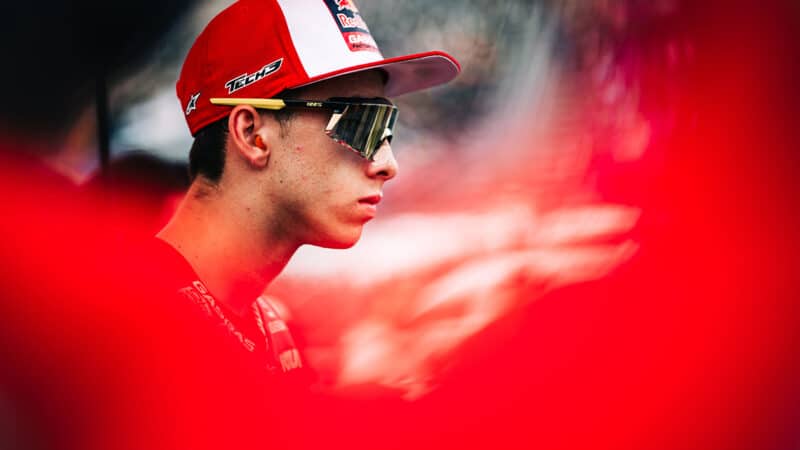
Acosta putting himself in the zone on Sunday’s grid. It nearly worked
GASGAS Tech 3
Acosta’s curve since he arrived in MotoGP runs true to Doohan words: two podiums at the first three GPs, then a crash here, another crash there, a few more here and there, then the inevitable slump in results.
His crew gathered around, explained that this is how it goes and helped him rebuild his confidence by returning to a friendlier, more familiar machine set-up. One step back to take two steps forward.
Acosta regained his confidence and speed. At Aragon he took his first front-row start since COTA and secured his first podium in nine races. Twice at Misano he chased the podium and slid out of fourth place. At Mandalika he had that great ride to second. And at Motegi he took his first MotoGP pole, then crashed out of both races.

